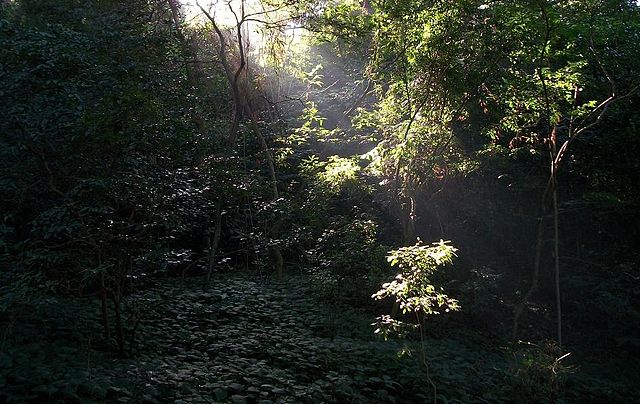Pigeon Valley is a Natural Heritage Park and formally declared municipal nature reserve in Durban, South Africa. It is an unusual example of an urban reserve with very high levels of biodiversity. It was established to provide protection for the Natal elm and other forest giants of the coastal climax forest. Another rare tree that occurs here is Natal forest loquat, which is endemic to the Durban area and to oNgoye Forest.
Hikers in Pigeon Valley
In March 2020, a juvenile Crowned Eagle stands over its prey, a Red Duiker
Red duiker at Pigeon Valley
Male buff-spotted flufftail in Pigeon Valley, January 2014
Areas of forest which grow in KwaZulu-Natal, South Africa mostly on south facing slopes in higher rainfall areas, and along the humid coastal areas. Different types of forest can be identified by their species composition which depends mostly on the altitude, latitude and substrate in which they grow. South facing slopes are favourable for the development of forest as they are more shaded, and therefore cooler and retain more moisture than the northern slopes. The extra moisture on the south slopes is not only favoured by forest trees, but also helps to prevent or subdue wildfires. Fires can also be blocked by cliff faces and rocks or boulders on these slopes, and by streams or rivers at the base of the slopes. The coastal regions are conducive to forest formation, because of high rainfall and humidity which are favoured by forest trees and also help to prevent or subdue fires. The rivers of the coastal areas are also broader than further inland, which may often prevent fires from spreading long distances, and fires generally burn uphill and therefore more often away from areas at low altitude.

Forest at Pigeon Valley
Mistbelt Forest at Ipithi Nature Reserve
Natal forest tree frog
Scadoxus puniceus produces flowers in late winter in the forests of KwaZulu-Natal








